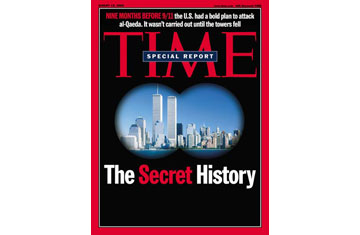
(11 of 19)
On April 30, nearly six weeks after the Administration started holding deputies' meetings, Clarke presented a new plan to them. In addition to Hadley, who chaired the hour-long meeting, the gathering included Cheney's chief of staff, Lewis Libby; Richard Armitage, the barrel-chested Deputy Secretary of State; Paul Wolfowitz, the scholarly hawk from the Pentagon; and John McLaughlin from the CIA. Armitage was enthusiastic about Clarke's plan, according to a senior official. But the CIA was gun-shy. Tenet was a Clinton holdover and thus vulnerable if anything went wrong. His agency was unwilling to take risks; it wanted "top cover" from the White House. The deputies, says a senior official, decided to have "three parallel reviews--one on al-Qaeda, one on the Pakistani political situation and the third on Indo-Pakistani relations." The issues, the deputies thought, were interrelated. "They wanted to view them holistically," says the senior official, "and not until they'd had three separate meetings on each of these were they able to hold a fourth integrating them all."
There was more. Throughout the spring, one bureaucratic wrangle in particular rumbled on, poisoning the atmosphere. At issue: the Predator.
The Predator had first been used in Bosnia in 1995. Later, the CIA and the Pentagon began a highly classified program designed to produce pictures--viewable in real time--that would be fine-grained enough to identify individuals. The new, improved Predator was finally ready in September 2000, and the CIA flew it over Afghanistan in a two-week "test of concept." First results were promising; one video sent to the White House showed a man who might have been bin Laden. For the first time, the CIA now had a way to check out a tip by one of its agents among the Afghan tribes. If there was a report that bin Laden was in the vicinity, says a former aide to Clinton, "we could put the Predator over the location and have eyes on the target."
But in October 2000, the Predator crashed when landing at its base in a country bordering Afghanistan. The unmanned aerial vehicle needed repairs, and in any event, the CIA and the Pentagon decided that the winter weather over Afghanistan would make it difficult to take good pictures. The Clinton team left office assuming that the Predator would be back in the skies by March 2001.
